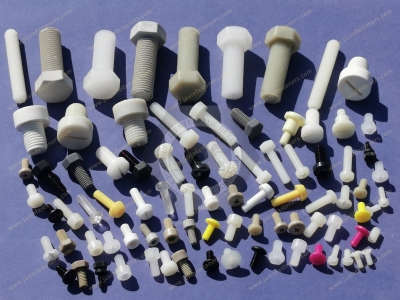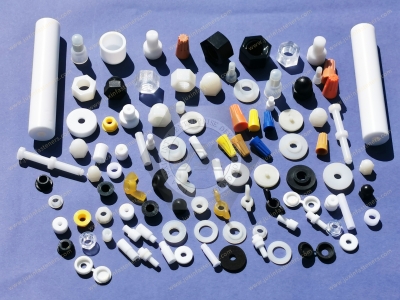Call Us
+86 136 6007 9809
Call Us
+86 136 6007 9809
Oct. 23, 2023
SIL silicone rubber seals
1. SIL silicone rubber seals have excellent heat resistance, cold resistance, ozone resistance, atmospheric aging resistance, and sound insulation properties. Still, SIL silicone rubber seals tensile strength more than general rubber and does not have oil resistance.
2. SIL silicone rubber seals are suitable for household appliances such as electric water heaters, irons, microwave ovens, etc. They are also ideal for a variety of supplies that come into contact with the human body, such as kettles, drinking fountains, etc.; however, they are not recommended for use in most concentrated solvents, oils, concentrated acids, and sodium hydroxide. 3. SIL silicone rubber seals have good insulating properties.
3. SIL silicone rubber seals are generally used in the temperature range of -55~250℃.
IIR butyl rubber seals:
1. IIR butyl rubber seals have excellent airtightness, good resistance to heat, sunlight, and ozone, and sound-insulating properties
2. IIR butyl rubber seals are resistant to polar solvents such as alcohols, ketones, esters, etc., and can be exposed to animal and vegetable oils or oxidizable substances; they are suitable for chemical-resistant or vacuum equipment and are not recommended for use with petroleum solvents, kerosene, or aromatics at the same time.
3. IIR butyl rubber seals are generally used in the temperature range of -50~110℃.
NBR butyl cyanide rubber seals:
1. NBR butyl cyanide rubber seals are suitable for use in petroleum-based hydraulic oils, glycol-based hydraulic oils, diester-based lubricants, gasoline, water, silicone grease, silicone oil, and other media;
2. NBR is the most widely used and lowest-cost rubber seal.
3. NBR butyl cyanide rubber seals are not suitable for use in polar solvents, such as ketones, ozone, nitro hydrocarbons, MEK, and chloroform; NBR butyl cyanide rubber seals are generally used in temperatures ranging from -40 to 120 degrees Celsius.
FLS Fluorosilicone Rubber Seals:
1. FLS fluorosilicone rubber seals have the advantages of fluorine rubber and silicone rubber, including good resistance to oil, solvents, fuel oil, and high and low temperatures.
2. FLS fluoro silicone rubber seals can resist the erosion of oxygen-containing compounds, aromatic hydrocarbons, and chlorine solvents.
3. FLS silicone fluoroelastomer seals are generally used in aviation, aerospace, and military applications and are not recommended for exposure to ketones and brake fluids.
4. FLS fluoro silicone rubber seals are generally used in the temperature range of -50~200℃.
EPDM EPDM rubber seals:
1. EPDM EPDM seals have good weather, ozone, water, and chemical resistance; EPDM EPDM seals can be used for alcohols and ketones and sealing high-temperature water vapor environments.
2. EPDM EPDM seals are suitable for bathroom fittings, automobile radiators, and automobile brake systems, but they are not recommended for food use or exposure to mineral oil.
3. EPDM EPDM seals are generally used in the temperature range of -55~150℃.


CR neoprene seals:
1. CR neoprene seals sunlight resistance, weather resistance is excellent, not afraid of dichlorodifluoromethane and ammonia and other refrigerants, resistance to dilute acid, and resistance to silicone grease-based lubricants, but CR neoprene seals in the aniline point of low mineral oil in the expansion of the amount of significant;
2. CR neoprene seals are easy to crystallize and harden at low temperatures, suitable for a variety of contact with the atmosphere, sunlight, ozone environment, and a variety of flame-resistant, chemical-resistant sealing links; CR neoprene seals are not recommended to be used in solid acids, nitro hydrocarbons, esters, chloroform and ketones in the chemicals.CR neoprene seals are generally used in temperatures of -55 ~ 120 ℃.
ACM Acrylic Rubber Seals:
1. ACM acrylate rubber seals are excellently resistant to oil, high temperature, and weather, but their mechanical strength, compression set, and water resistance are slightly worse.
2. ACM acrylic rubber seals are generally used in automobile transmission and power steering systems, not for hot water, brake fluid, or phosphate ester.
3. ACM acrylic rubber seals are generally used in the temperature range of -25~170℃.
Seal NR natural rubber ring:
1. NR natural rubber seals have good abrasion resistance, elasticity, tensile strength, and elongation, but they are easy to age in the air and become viscous when hot.
2. NR natural rubber seals are easy to swell and dissolve in mineral oil or gasoline; they are alkali resistant but not resistant to strong acids.
3. NR natural rubber seals suit automobile brake fluid, ethanol, and other liquids with hydroxide ions.
4. NR natural rubber seals are generally used in the temperature range of -20~100℃.
PU polyurethane rubber seals: PU polyurethane rubber seals' mechanical properties are excellent, wear-resistant, and high-pressure performance are far superior to other rubber U polyurethane rubber seals aging resistance, ozone resistance, oil resistance is also quite good, but high-temperature hydrolysis U polyurethane rubber seals are generally used for the high-pressure, abrasion-resistant sealing link, such as hydraulic cylinders, PU polyurethane rubber seals are generally used in the temperature range of -45 ~ 90 ℃. 45~90℃.
HNBR hydrogenated butyl cyanide rubber seals:
1. HNBR hydrogenated cyclobutadiene rubber seals have excellent corrosion, tearing, and compression deformation resistance, ozone, sunlight, weathering resistance, and abrasion resistance than butyl cyanide rubber.
2. HNBR hydrogenated cyanobutadiene rubber seals are suitable for washing machines, automobile engine systems, and refrigeration systems using the new environmentally friendly refrigerant R134a.
3. HNBR seals are not recommended for use in alcohols, esters, or aromatic solutions; the general temperature range of HNBR seals is -40~150℃.
VITON Fluorocarbon Rubber Seals:
1. VITON Fluorocarbon rubber seals are better than silicone rubber in terms of high-temperature resistance, excellent weather resistance, ozone resistance, and chemical resistance, while cold resistance is poor.
2. VITON Fluorocarbon rubber seals resist most oils and solvents, especially acids, aliphatic hydrocarbons, aromatic hydrocarbons, and animal and vegetable oils.
3. VITON Fluorocarbon rubber seals are suitable for diesel engines, fuel systems, and chemical plant sealing needs; it is not recommended that VITON Fluorocarbon rubber seals be used in ketones, low molecular weight esters, and nitrogen-containing mixtures. VITON fluoroelastomer seals are generally used in temperatures ranging from -20 to 250°C. VITON fluoroelastomer seals are suitable for diesel engines, fuel systems, and chemical plants.
If you are looking for high-quality fastener screws & all kinds of washers or technical support for structural design, please get in touch with me. Thanks. Email: adelajonly@gmail.com Website: www.juxinfasteners.com
Contact Us
Tel.:
+86 020 8621 0320
+86 020 3121 6067
Technical Support:
Navigation
SEND INQUIREY